
GENERAL RELATIVITY AND GRAVITATION
Scope & Guideline
Pioneering Insights into the Nature of Gravity and Relativity
Introduction
Aims and Scopes
- Black Hole Physics:
Research focusing on the properties, dynamics, and thermodynamics of black holes, including studies on black hole entropy, stability, and the effects of various matter fields. - Cosmology:
Investigations into the large-scale structure of the universe, cosmic inflation, dark energy, and modifications to general relativity that impact cosmological models. - Gravitational Waves:
Studies examining the generation, propagation, and detection of gravitational waves, particularly in the context of binary systems and cosmological events. - Modified Theories of Gravity:
Exploration of alternative theories to general relativity, including scalar-tensor theories, f(R) gravity, and other modifications that address unresolved issues in gravitational physics. - Quantum Gravity:
Research aimed at reconciling general relativity with quantum mechanics, including approaches like loop quantum gravity, string theory, and the implications of quantum effects on spacetime. - Mathematical Foundations of General Relativity:
Analytical and geometrical studies that deepen the mathematical understanding of spacetime, curvature, and the equations governing gravitational phenomena.
Trending and Emerging
- Gravitational Wave Astronomy:
With the advent of gravitational wave detectors, there is a significant increase in publications analyzing gravitational wave signals, their sources, and the implications for astrophysics and cosmology. - Quantum Aspects of Black Holes:
Research delving into the quantum properties of black holes, including studies on Hawking radiation, black hole information paradox, and the role of quantum fields in curved spacetime. - Interdisciplinary Approaches to Gravity:
There is a growing trend towards interdisciplinary research that combines insights from quantum mechanics, thermodynamics, and statistical mechanics with gravitational theories. - Higher Dimensional Theories and Extra Dimensions:
An increase in studies exploring the implications of higher-dimensional theories, such as string theory and brane-world scenarios, reflecting a broader interest in fundamental physics beyond four dimensions. - Numerical Relativity and Computational Methods:
The use of numerical simulations to study dynamic systems in general relativity, particularly in the context of binary black hole mergers and cosmological simulations, is on the rise.
Declining or Waning
- Classical General Relativity Applications:
Papers that strictly apply classical general relativity to well-established problems are becoming less common, as researchers increasingly explore more complex and modified frameworks. - Non-relativistic Gravity Studies:
Research focusing on non-relativistic limits of gravitational theories has decreased, with a growing preference for relativistic treatments that incorporate cosmological and astrophysical phenomena. - Static Solutions in General Relativity:
The exploration of static solutions, such as certain exact solutions of the Einstein equations, is less frequently addressed, possibly due to the shift towards dynamic and time-dependent models.
Similar Journals
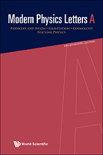
MODERN PHYSICS LETTERS A
Driving Innovation in Physics Through Scholarly DialogueMODERN PHYSICS LETTERS A, published by World Scientific Publishing Co Pte Ltd, is a distinguished journal in the field of physics that serves as a pivotal platform for researchers, professionals, and students alike. With ISSN 0217-7323 and E-ISSN 1793-6632, the journal has gained international acclaim for its contributions to Astronomy and Astrophysics as well as Nuclear and High Energy Physics. The journal is ranked in Q3 for both Astronomy and Astrophysics and Nuclear and High Energy Physics, showcasing its relevance in these areas, while also achieving a Q2 ranking in the broader category of Physics and Astronomy (miscellaneous). Spanning from 1996 to 2024, MODERN PHYSICS LETTERS A promotes open dialogue and dissemination of pioneering research findings and innovative theories. While the journal operates without an open access option, its rich content is easily accessible through various academic databases, ensuring that vital research is shared widely among the scientific community. Situated in Singapore, this journal plays an essential role in the continuous advancement of the physics discipline, fostering collaboration and knowledge sharing among global researchers.
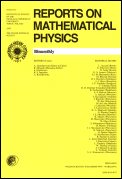
REPORTS ON MATHEMATICAL PHYSICS
Exploring the Nexus of Mathematics and PhysicsREPORTS ON MATHEMATICAL PHYSICS is a distinguished journal published by PERGAMON-ELSEVIER SCIENCE LTD, focusing on the intricate interplay between mathematics and physics. Established in the United Kingdom, this journal has been contributing to the academic community since its inception, publishing significant research findings that explore the theoretical underpinnings of physical phenomena. With an ISSN of 0034-4877 and an E-ISSN of 1879-0674, the journal maintains a consistent publishing history, converging research from 1970 to 2024. It is currently ranked Q3 in both Mathematical Physics and Statistical and Nonlinear Physics categories, reflecting its commitment to maintaining a high standard of scholarly work. Although it lacks Open Access options, its targeted audience of researchers, professionals, and students will find invaluable insights into advanced mathematical methods, statistical applications, and innovative approaches in physics. With its esteemed reputation and critical role in the field, REPORTS ON MATHEMATICAL PHYSICS continues to be an essential resource for those seeking to deepen their understanding of mathematical applications in physical systems.

INTERNATIONAL JOURNAL OF THEORETICAL PHYSICS
Pioneering Insights in Physics and MathematicsInternational Journal of Theoretical Physics is a premier academic journal dedicated to the advancement of knowledge in the fields of theoretical physics and mathematics. Published by Springer/Plenum Publishers, this esteemed journal has been a vital platform for researchers since its inception in 1968. With an impressive track record and an emphasis on high-quality, innovative research, the journal currently ranks in the third quartile (Q3) in both the Mathematics (Miscellaneous) and Physics and Astronomy (Miscellaneous) categories as of 2023. While the journal is not open access, it offers accessible subscription options for institutions and individuals. The International Journal of Theoretical Physics serves as an essential resource for scholars and practitioners looking to deepen their understanding and contribute to the evolving landscape of theoretical research, making it a key player in nurturing academic discourse and fostering collaboration in its field.
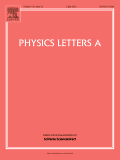
PHYSICS LETTERS A
Showcasing Breakthroughs in Physics ResearchPhysics Letters A is a renowned scientific journal published by Elsevier, dedicated to the field of physics and astronomy. Established in 1963, it has continuously evolved, offering a platform for the swift dissemination of significant research findings in various branches of physics. As of 2023, it holds a commendable Q2 ranking in the category of Physics and Astronomy (miscellaneous) and ranks 69th out of 243 journals in the same domain according to Scopus, positioning itself in the 71st percentile of academic impact. With its comprehensive scope, Physics Letters A provides a vital resource for researchers, professionals, and students, facilitating academic discourse and advancing knowledge across the field. Although it does not currently offer Open Access options, its rigorous peer-review process ensures high-quality content. It is centrally located in Amsterdam, Netherlands, and continues to be an essential outlet for innovative contributions to the physics community through the year 2024 and beyond.
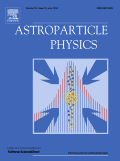
ASTROPARTICLE PHYSICS
Charting New Territories in Astroparticle PhysicsASTROPARTICLE PHYSICS is a premier international journal dedicated to advancing the understanding of the intersection between particle physics, astronomy, and astrophysics. Published by Elsevier, this journal has established itself as a leading source of research insights since its inception in 1992, with a remarkable impact factor positioning it within the Q1 category for Astronomy and Astrophysics for 2023. With a Scopus ranking of 18 out of 90 in its field, representing the top 80th percentile, ASTROPARTICLE PHYSICS serves as an essential platform for disseminating groundbreaking research that influences astrophysical studies and cosmological theories. Researchers and academics have access to a robust collection of peer-reviewed articles that explore various dimensions of astroparticle phenomena, collaborative cosmic investigations, and theoretical advancements. Although not an open-access journal, it provides extensive research coverage accessible to a global audience from its headquarters in Amsterdam, Netherlands, offering a vital resource for those seeking to push the boundaries of knowledge in the realms of astrophysics and particle physics.
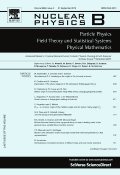
NUCLEAR PHYSICS B
Innovating the Future of Nuclear ScienceNUCLEAR PHYSICS B, published by Elsevier, stands at the forefront of research in the dynamic field of Nuclear and High Energy Physics. Established in 1967, this prestigious journal has developed a reputation for excellence, now positioned in the Q1 category according to its 2023 quartile rankings. With an impressive Scopus rank of #21 out of 87 in its category and a commendable 76th percentile, it serves as a vital resource for scholars investigating the underlying principles of nuclear interactions and particle physics. The journal transitioned to an Open Access model in 2014, ensuring that groundbreaking research is accessible to a global audience. Its commitment to quality and innovation makes NUCLEAR PHYSICS B an essential platform for researchers, professionals, and students aiming to stay at the cutting edge of discoveries in this expansive field, contributing to the scientific discourse for nearly six decades.

FOUNDATIONS OF PHYSICS
Delving Deep into the Foundations of KnowledgeFOUNDATIONS OF PHYSICS is a prestigious journal published by SPRINGER, dedicated to the interdisciplinary exploration of the philosophical and historical dimensions of physics. With a rich publication history spanning from 1970 to 2024, the journal holds a prominent position in the academic community, evidenced by its Q1 ranking in both History and Philosophy of Science and Philosophy, as well as a respectable Q2 in Physics and Astronomy for miscellaneous topics. The journal's ISSN is 0015-9018 and its E-ISSN is 1572-9516, facilitating access to a wide array of scholarly articles. Although it does not offer an open access option, the journal remains an invaluable resource for researchers, professionals, and students eager to delve into the complexities that intertwine physics with philosophical inquiry and historical context. As a critical platform for groundbreaking research, FOUNDATIONS OF PHYSICS fosters vibrant discourse and encourages innovative thought within these essential fields.
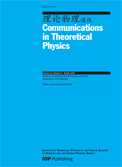
COMMUNICATIONS IN THEORETICAL PHYSICS
Advancing the frontiers of theoretical physics.COMMUNICATIONS IN THEORETICAL PHYSICS is a distinguished journal published by IOP Publishing Ltd, focusing on the broad and evolving field of theoretical physics. With an ISSN of 0253-6102 and an E-ISSN of 1572-9494, this journal provides a platform for the dissemination of innovative research that contributes to the understanding of complex physical concepts. Situated in the United Kingdom, it has established itself as a pivotal resource from 1996 to 2024, achieving a commendable Q2 ranking in the category of Physics and Astronomy (miscellaneous) for 2023. With a Scopus ranking of #18 out of 81 in its category, demonstrating a 78th percentile, this journal plays a crucial role in enhancing scholarly communication among researchers, professionals, and students alike. Although it does not currently offer Open Access options, the journal's comprehensive scope and commitment to high-quality peer-reviewed research underline its significance in the scientific community, making it an essential reading for anyone engaged in theoretical physics.

Journal of High Energy Astrophysics
Exploring the Cosmos: Unraveling High-Energy MysteriesThe Journal of High Energy Astrophysics, published by Elsevier, is a premier platform for groundbreaking research in the fields of astrophysics and high-energy phenomena. With an ISSN of 2214-4048 and an E-ISSN of 2214-4056, this journal has quickly established itself as a leader since its inception in 2014. Operating out of the Netherlands, it is recognized for its rigorous peer-review process and high-quality publications, earning an impressive Q1 ranking across multiple domains, including Astronomy and Astrophysics, Nuclear and High Energy Physics, and Space and Planetary Science in 2023. With a Scopus rank of 12 out of 90 in the Astronomy and Astrophysics category, and being positioned in the 87th percentile, the journal plays a pivotal role in disseminating advancements and fostering collaboration among researchers, professionals, and students. Though the journal is not open access, it offers robust subscription options for institutions and individuals seeking to dive into the latest discoveries and theories in high-energy astrophysics.

PHYSICAL REVIEW LETTERS
Unveiling Breakthroughs in Physical SciencePhysical Review Letters, published by the American Physical Society, is a premier journal in the field of Physics and Astronomy renowned for its rapid dissemination of high-impact research findings. With a distinguished history dating back to 1958 and an impressive ranking of #13 out of 243 in the general physics category, it stands proudly within the Q1 quartile, placing it in the top 6% of journals in its field. The journal focuses on brief reports of significant fundamental research across all areas of physics, making it an essential resource for researchers, professionals, and students seeking to stay at the forefront of developments in their field. Although Physical Review Letters does not offer open access options, its rigorous peer-review process ensures a high standard of quality and relevance in its published articles. With an unwavering commitment to advancing the understanding of physical science, this journal is indispensable for those looking to make a genuine impact in their research endeavors.